Better Water for One Rural Cuban Community
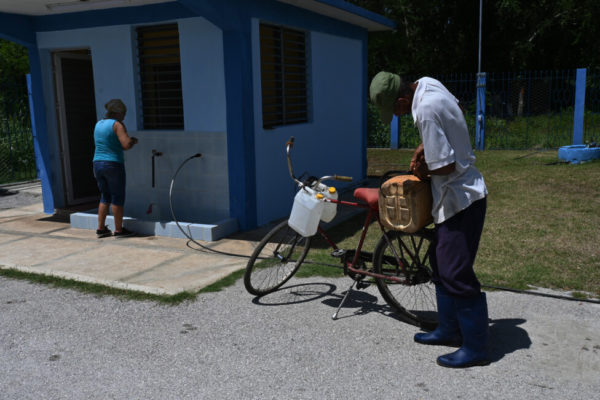
HAVANA TIMES – The day came when hundreds of people from the rural community of Las Mangas in eastern Cuba’s Granma province understood that their long-time suspicions were right – the water they’d drunk for decades wasn’t crystalline at all, rather “slightly salty,” as they put it.
This past August undoubtedly brought positive change, thanks to the entry into operation of a desalinizing plant. Construction on it had begun five years ago, in 2019, with a total investment of US $61,000 according to the Provincial Delegation of Hydraulic Resources
“We did a test, and the water coming from the plant is transparent when it freezes, while that in the taps looks white, due to the impurities. Now, with the plant, people are happy,” community representative Rodolfo Echavarria, 55, told IPS.
Las Mangas is part of the township of Bayamo, Granma’s provincial capital located some 460 miles (740 kilometers) east of Havana. The community receives water through hydrologic networks that pipe the water from a well to the homes.
However, the water source has a salinity level greater than one gram of soluble salts per liter, the upper limit for human consumption according to the standards of the country’s health authorities.
“The desalinizing plant was constructed right at the outlet to this salubrious well, and serves as an easy access point, [where people can come with their recipients] to fill up with the processed liquid,” explained Yasser Vazquez, Granma’s Deputy Delegate of Hydraulic Resources, speaking to IPS in Bayomo.
The new installation is the third of its kind in the province. It can process 16,000 liters of water a day and, according to project staff, benefits some 1,197 inhabitants, although Echavarria believes that the figure is closer to 2,000, since people also come from some surrounding communities – El Chungo, La Bayamesa and Santa Maria, all less than two miles from Las Mangas.
The plant’s purification system utilizes the method of inverse osmosis, one of the most popular techniques worldwide. Other desalinization methods include distilling, freezing, formation of hydrates, rapid evaporation and electrodialysis.
Inverse osmosis processing consists in subjecting salt water to pressure and forcing it through a semi-permeable membrane, which allows the [water] to pass, but not the dissolved salts.
In essence, the membrane separates the water from a pressurized saline solution from its dissolved salts. This water is then passed through other rounds of filtration, and certain chemical substances are added until it reaches the required standards of potability.
Yoel Gonzales, a 52-year-old resident of the community, is the plant’s operator and also head of maintenance. He learned these skills through training courses.
“You have to be very familiar with the [plant’s] functioning, because there are things that can get stuck, as has happened. I’ve lived in Las Mangas my whole life, and this is the best thing that’s happened here. Water’s always been a problem. We used to drink that salty water, and you can taste the acid and the salt,” Gonzalez stated.
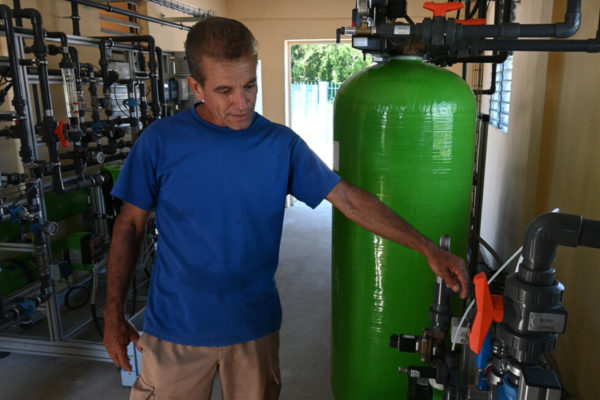
A change of airs, or rather, waters
In this community, situated some five miles from Bayamo, the desalinizing facility is open from 6 am to 6 pm. During these hours people come and fill their containers of different sizes from the only spout there.
They now use the slightly chlorinated salty water that flows from the taps in each Las Mangas home or locality only for cleaning, scouring, washing clothes and sometimes for cooking. In this community of small farmers and ranchers, some of the inhabitants also use it to calm the thirst of their animals.
“When the plant began production, people initially said: ‘I’ll just drink the regular water; I’ve drunk it all my life and I haven’t died yet.’ That’s how Cubans are. But when they tried the new water, everything changed,” recounted community leader Echavarria.
Nancy Gomez is 72 and was born here. She’s one of the few residents who continue resisting the change. “The neighbors are surprised that I don’t drink the clean water, but I’m used to this and it’s never caused me any health issues. My children grew up drinking that [salty] water. But my granddaughter does go get it from the plant for her children, and sometimes I drink it. You can taste the difference,” she admitted.
For his part, fifty-year-old Oscar Fajardo avoided drinking the well water since he moved to Las Mangas from Guasimilla, five miles distant. In his place of origin, the water tasted cool and “sweet,” and he never got used to the new salty liquid. Even after he moved, Fajardo continued to haul water from Guasimilla whenever he visited his mother on his motorbike.
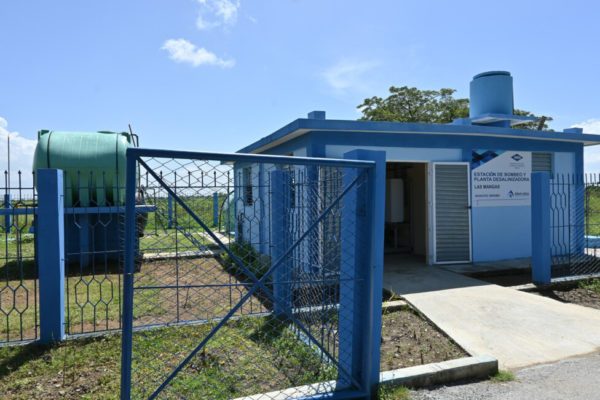
“I’d get water from there, or other places. Sometimes I had to drink the bad stuff, but after seeing the sediments that accumulated in the tubes and glasses, I tried to avoid it. People here have adapted to drinking it salty, but a few of us found other sources,” he stated.
While boiling and drinking the tap water was common, some of the more aware residents or those with more economic resources would go to Bayamo or El Chungo on their own to fill the containers from your homes, or they’d buy the water from people who came around selling on horse-drawn carts.
“The desalinizing plant is a great benefit, a marvel. If something as necessary as water isn’t good, imagine the harm to health,” Oscar Fajardo believes.
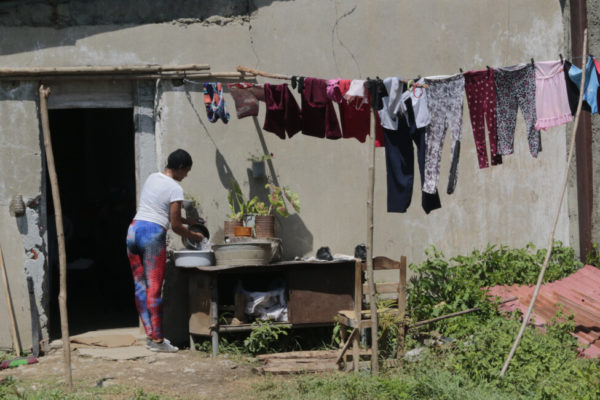
The dangers of highly saline water
There are a variety of risks associated with consuming excessively salty water. It can provoke stomach problems, dehydration, increased blood pressure, water retention in the body, or kidney damage. In addition to the chloride electrolyte, salt contains sodium, which harms the human organism in many ways when consumed in large quantities.
The World Health Organization recommends not consuming over 5 grams of salt a day, equivalent to 2 grams of sodium.
Gonzalez, the operator of the desalinization plant in Las Mangas, confirmed that there are a lot of cases of kidney stones in the community. These are hard deposits composed of minerals and salts that form inside the kidneys and can affect any part of the urinary tract.
It’s possible that these result from prolonged consumption of salty water, as several of the residents interviewed by IPS said they suspected.
“One of my sons complains about having kidney stones when he pees; they frequently cause him severe cramps,” said Gomez, the townswoman who resists drinking the plant’s processed water.
Marisol Hildago, 37, a neighbor of Las Mangas and the mother of two children, used to drink the tap water, until an unexpected event caused her to begin going to El Chungo for her drinking water.
“My father developed chronic renal insufficiency, and for that reason I began to look for water there. Now we only drink the water from the plant, and my Dad’s condition has improved,” she said.
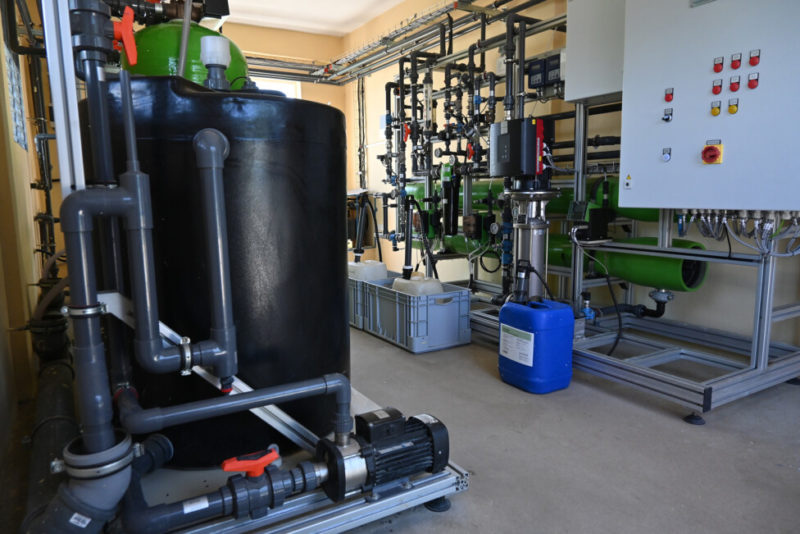
Water problems in the Granma province
Las Mangas isn’t the only community in Granma province with water quality problems. There are others where the subsurface basin and the hydric sources present high levels of salinity who generally receive potable water from tanker trucks.
Granma, known as the “the key to the Cauto River,” is the point where the longest river in the Antilles region – 213 miles long – flows out to sea. The areas around the river have low isometry and frequent swampy zones, which makes it more vulnerable to seawater penetration and saline intrusion into the groundwater, as happens in Las Mangas and other localities.
Some who study it affirm that the river’s flow has diminished due to climate change, deforestation, and the construction of the Cauto de Paso reservoir, inaugurated in 1992 with the third largest capacity in the country.
With the river’s diminished volume, the ocean waters penetrated more strongly along its course, affecting the waters and watersheds of some territories at the mouth of the Cauto River.
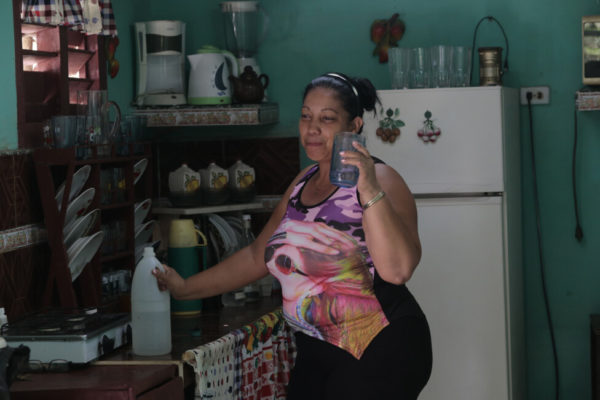
The supply of water to this province of 804,000 inhabitants – in a country of 10 million – is currently stable. The heavy rainfall of 2023, which destroyed part of the province’s infrastructure, also filled the reservoirs and recharged the groundwater. Granma Province generally suffers from droughts that, according to those in charge of water resources, sometimes affect over 100,000 people.
In times of drought, the river’s water level drops and the penetration of saltwater from the ocean increases, rendering numerous wells unusable, especially the artesian wells and those that are less deep, which the residents use as a solution in places of difficult access.
The other large problem lies in the accessibility of the hydraulic networks and the availability of public water services, since only 76% of the province’s population receives their water pumped through pipes to their taps. Only 310,000 people (38.7% of the population) receive water from this system at least once every three days.
Other areas of the province, such as the coastal town of Manzanillo sometimes receive their supply of piped water after lapses as long as 20 days. A total of 66,000 inhabitants receive water from tanker trucks.
The construction of another 15 desalinizing plants is planned for Granma province. These will add to the dozens already existing in the elongated Cuban territory. In the past decade, the Cuban government has promoted the construction of such hydraulic projects in communities whose water sources have too much salinity, as well for industries and beachside tourist centers.
First published in Spanish by IPS and translated and posted in English by Havana Times.






This is a expensive process to run and maintain are they going to sell this water by the liter in reusable containers, to cover the expenses Pure water in Cuba is a very big problem even for the tourist.